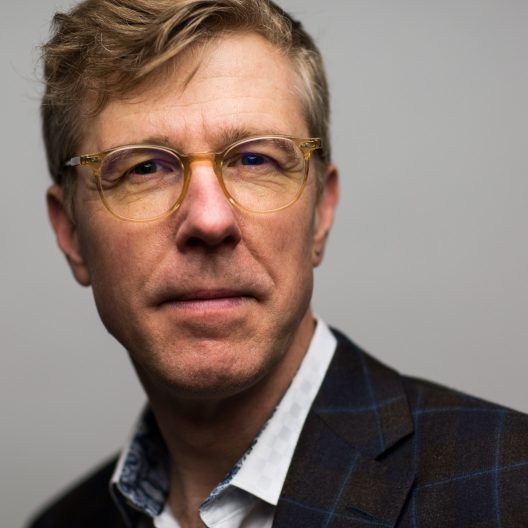A recent study published in Geophysical Research Letters by UW researchers, including SEFS Associate Professor Laura Prugh, examines the relationship between early-season snow and total snowfall in the western U.S. Using data from a network of snow sensors, the researchers looked at air temperature and accumulated precipitation from 2001 to 2022 for over 800 sites. They found that in some western states, including Alaska, Oregon and Washington, and parts of Utah, Wyoming and Colorado, autumn snowfall is a good predictor of the total snow an area will get throughout the winter-spring season. The relationship between autumn snowfall and total snowpack was harder to predict in California, Nevada, New Mexico and Arizona, where weather patterns varied too much or most precipitation fell after December.
SEFS in the News: September, 2023
Browse recent mentions of SEFS researchers in the news. Have news to share? Send your updates to sefscomm@uw.edu.
- Greg Bratman, SEFS assistant professor, was featured in a Seattle Times article about the benefits of trees in cities.
- Jerry Franklin, professor emeritus of environmental and forest sciences at the UW, is quoted in a Seattle Times article about wildfire in Oregon [paywall].
- Ray Larson, curator and associate director of the University of Washington Botanic Gardens, was feature in a Seattle Times article about coping with grief through gardening [paywall].
- UW Botanic Gardens Associate Director Wendy Gibble was featured on a FOX 13 Seattle segment about climate change impacts on wildflowers.
- Robert Van Pelt, SEFS affiliate professor, was featured in the Seattle Times [paywall].
- Brian Harvey, SEFS associate professor, was featured on a PBS Northwest Now segment about climate change in Washington.
- Susan Prichard, SEFS research scientist, was featured by MyNorthwest for her wildfire research and launch of REBURN, a fire modeling tool.
- SEFS research scientist Susan Prichard was featured in Crosscut, Axios Seattle, GeekWire, and Optics & Photonics News for her wildfire research and launch of REBURN, a fire modeling tool.
- Phil Levin, SEFS professor of practice, was featured in a KUOW article about the US National Nature Assessment.
- SEFS professor Peter Kahn was featured in a PBS documentary on The Human Footprint.
SEFS remembers Affiliate Professor Don Hanley
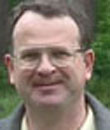 Long-time SEFS affiliate professor Don Hanley passed away on September 2nd after years of battling cancer. Don was a valued colleague, mentor, and friend, and had recently celebrated his 50th wedding anniversary with his wife, Kris Hanley. For over 25 years, Don held concurrent faculty positions at the UW and Washington State University as a professor and extension forester and was based at UW Seattle. Throughout his distinguished career in forestry, Don was a force for change. He guided private forest landowners towards sustainable, productive stewardship over their resources and developed an educational program, including tours, demonstrations, workshops, and publications that benefited nearly 40,000 Washington residents who own forest land.
Long-time SEFS affiliate professor Don Hanley passed away on September 2nd after years of battling cancer. Don was a valued colleague, mentor, and friend, and had recently celebrated his 50th wedding anniversary with his wife, Kris Hanley. For over 25 years, Don held concurrent faculty positions at the UW and Washington State University as a professor and extension forester and was based at UW Seattle. Throughout his distinguished career in forestry, Don was a force for change. He guided private forest landowners towards sustainable, productive stewardship over their resources and developed an educational program, including tours, demonstrations, workshops, and publications that benefited nearly 40,000 Washington residents who own forest land.
Don was selected for the Career Leadership Award from the Association of Natural Resource Extension Professionals in 2010 for his outstanding work in the field. In 2019, Don was awarded Forester of the Year by the Washington State Society of American Foresters for his efforts in guiding and educating forest landowners. He helped private landowners and professional foresters alike achieve their goals to protect and sustainably manage Washington’s natural resources. Don retired in 2009 and remained an active volunteer, dedicated husband, and emeritus extension forester within the Washington forestry community. His contributions and memory will not be forgotten.
For memorial updates, see Don Hanley’s obituary.
SEFS director Dan Brown contributes to research on the rise of corporate farms in Africa
SEFS director Dan Brown is a co-author on a recent publication in the Proceedings of the National Academy of Sciences (PNAS) that demonstrates how corporate farms, which have steadily risen in Africa, can displace small farmers leading to greater land inequity, poverty, and food insecurity.
The research highlighted how land use policies can reinforce existing inequalities. Food price volatility, land scarcity, and increasing land values in the early 2000s created an incentive for private companies to acquire farm and forest land. Sub-Saharan Africa was a hotspot of land investments, with commercial acquisitions often occurring in agricultural areas already in use by smallholder farmers. In nearby villages, some of these land-use interventions led to dispossession of land or displacement for local farmers, resulting in greater inequality. Households with the smallest land holdings bear the brunt of the impact of large-scale land acquisitions, according to the paper.
The study, which surveyed households surrounding large corporate farms in Tanzania, examined how land use change from commercial acquisitions led to significant consequences for livelihoods and development.
SEFS and U.S. Forest Service researchers develop wildfire modeling tool for the Pacific Northwest and beyond
SEFS research scientist Susan Prichard, alongside colleagues from the U.S. Forest Service’s Pacific Northwest Research Station — Paul Hessburg, Nicholas Povak and Brion Salter — and consulting fire ecologist Robert Gray, have developed a tool for modeling wildfires that could help managers and policymakers better understand long-term consequences of different fire management practices and policies.
The tool, known as REBURN, can simulate large forest landscapes and wildfire dynamics over decades or centuries under different wildfire management strategies. The model can simulate the consequences of extinguishing all wildfires regardless of size, which was done for much of the 20th century, or of allowing certain fires to return to uninhabited areas. REBURN can also simulate conditions where more benign forest landscape dynamics have fully recovered in an area.
The researchers applied REBURN to a region in north-central Washington, and found that setting prescribed burns and allowing smaller wildfires to burn can yield more varied and resilient forests over time.
As wildfire activity increases in forests, SEFS-led research helps predict wildfire severity based on fire size
When wildfires cross a landscape, the severity of the burn isn’t uniform over the area impacted. Areas where most or all trees are killed by fire are considered “high severity burns.” The shape and size of high severity burned patches within fires play an important role in forest resilience and fire regimes, and have been difficult to predict.
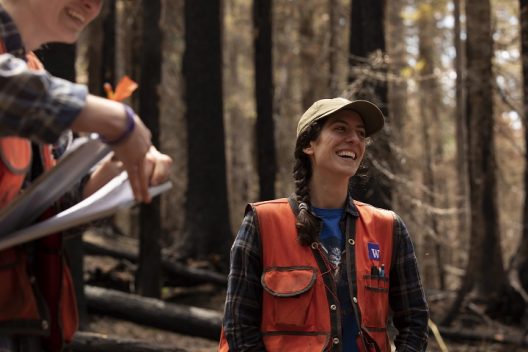
New research led by recent SEFS alumna Michele S. Buonanduci, a member of SEFS Associate Professor Brian Harvey’s lab, identifies a method to predict burn severity for future fires by looking at the relationship between fire size and patterns of burn severity. The researchers used data from over 1600 fires occurring in the Northwest US between 1985 and 2020 to see how relationships between fire size and severity vary across space and time, and found that the larger the fire, the higher the likelihood of large, contiguous, simple patches of high severity burned area. This relationship was consistent across the Northwest US and throughout the 35-year satellite record used in the study. Published in Ecology Letters, these findings provide a way to predict fire severity and impact based on projected fire sizes for near-term fires.
“It’s really difficult to plan for future fire activity if we don’t have a sense of what these fire severity patterns might look like,” said Buonanduci.
Given the complexity of the factors that influence fire severity, including topography, vegetation type, and weather, projecting future burn impacts is challenging. “A really wide range of severity levels and patterns are possible at any given landscape and just might depend on the weather at the time of burning,” said Buonanduci.
With collaborators from the Washington Department of Natural Resources, Buonanduci and her co-authors sought to anticipate the types of spatial patterns we might see in future fires, given projections for fire size.
Fire severity directly affects post-fire seed availability and dispersal, rates of forest regeneration, carbon uptake, and landscape change to non-forest. When you have large, contiguous high severity burn areas, forests are more likely to transition to non-forest vegetation as it’s more difficult for the remaining unburnt seed sources to reach the interior of the burn area than it would be in smaller, patchy burn areas.
“Those high severity patches are often where management intervention is most needed in terms of replanting with tree seedlings following fire. So having a sense of the range of ecological effects we might expect is going to be really important for forest managers working in a variety of contexts,” said Buonanduci.
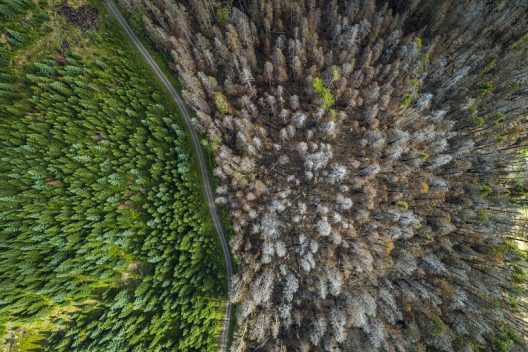
Already, the results of this work are in use to better prepare land managers and communities for future fires. Buonanduci and her collaborators are using their findings to make projections for potential ecological effects of fire in western Washington and northwestern Oregon in the near future.
Co-authors on the study included Daniel Donato and Joshua Halofsky, SEFS affiliate assistant professors with the Washington State Department of Natural Resources, and SEFS alumna Maureen Kennedy, associate professor of quantitative wildfire ecology at the School of Interdisciplinary Arts and Sciences at UW Tacoma.
This work was funded by a US Geological Survey Northwest Climate Adaptation Science Center award and a Graduate Research Innovation award from the Joint Fire Science Program.
SEFS faculty and alumni appointed to newly established Northwest Forest Plan Federal Advisory Committee
The USDA Forest Service announced the formation of a new Federal Advisory Committee to advise on a climate-informed approach to landscape management across national forest lands in Washington, Oregon and Northern California. These forests constitute the Northwest Forest Plan area, which provides a coordinated management direction for the lands administered by the USDA Forest Service and the USDI Bureau of Land Management in the region.
Among the appointed members are SEFS Professor Emeritus Dr. Jerry Franklin, who was a major contributor to the initial development of the Northwest Forest Plan, and Dr. Ryan Haugo, SEFS alumnus and current Director of Conservation Science with The Nature Conservancy.
The committee will make recommendations on modernizing the Northwest Forest Plan with the latest climate science to create sustainably-managed national forests that are resilient to wildfire, insects, disease, and other disturbances, while meeting the needs of local communities and incorporating traditional ecological knowledge. In particular, the committee will work to provide guidance to the Forest Service on reducing wildfire risk, restoring fire resilience, and enabling long-term ecological integrity for people, communities and natural resources.
SEFS-led research points to wildlife cameras as a potential source for improving snow cover maps
New research led by SEFS Ph.D. Candidate Catherine (Katie) Breen highlights remote cameras deployed to monitor wildlife as an untapped source of snow cover observations. Published in the journal Remote Sensing of Environment last week, Breen and her advisor, Associate Professor Laura Prugh, worked with colleagues at the Norwegian Institute for Nature Research and NASA on a method combining international datasets to validate and improve satellite observations of snow cover using imagery from wildlife camera networks.
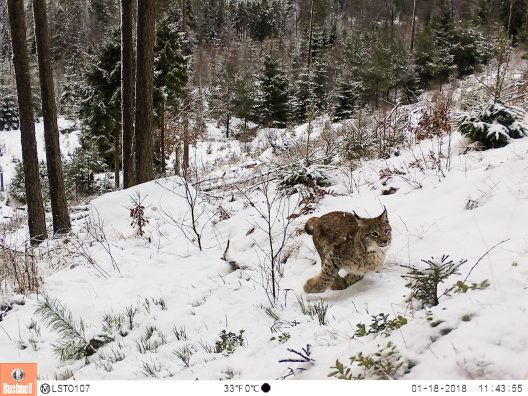
Globally, snow cover observations are used for hydrological forecasting, predicting the timing of snow melt and seasonal snow patterns, water resource planning, and animal migration patterns. Currently, satellite observations provide daily data on snow cover, but cloud and forest cover among other factors can impede the accuracy of the information.
To address this limitation and improve snow cover observations, Breen and Prugh sought to combine their respective backgrounds in remote sensing and wildlife science to explore how existing networks of wildlife cameras could supplement satellite observations to produce a more accurate picture of snow cover patterns. Colleagues in Norway working with expansive wildlife camera dataset presented an opportunity to pursue the novel concept.
“Dr. Prugh’s experience ensured expert use of camera trap datasets, and I helped bring experience with satellite datasets. Our collaborators at NASA are leaders in remote sensing for snow. The final missing piece was an extensive camera trap dataset from a highly respected Norwegian research team,” said Breen.
Breen received a NASA Graduate Fellowship and a Fellowship from the American Scandinavian Foundation and traveled to Norway to work with the Norwegian Institute for Nature Research (NINA). NINA, an applied ecological research center, hosts a network of camera traps across the country to track wildlife populations and biodiversity.
The researchers used data from over one thousand wildlife cameras, spread across 10 degrees of latitude through the forested, mountainous, and coastal regions of Norway. Along with information on wildlife habits and movement, each camera provides a trove of observations about on-the-ground snow conditions throughout the year.
Whether the observations would align with satellite imagery given the differences in scale was uncertain. While the wildlife cameras capture a field of view of about 20 to 30 meters, satellite observations are made at a scale of 500 meters, or the size of several football fields. To their surprise, the team found strong agreement between the camera trap data and satellite observations on the presence or absence of snow across the region.
“In some ways, the cameras are even more accurate because they allow you to see below the tree crowns and get some of the on-the-ground information that satellites don’t have access to,” said Breen.
However, the datasets diverge after several days of consistent cloud cover. Satellites measure snow cover based on the reflectivity of the ground surface, and in the presence of clouds, the last clear-day observation is used to predict what current conditions may be. After three or four cloudy days, the predicted value could stray significantly from true conditions on the ground as snow or rainfall may have rapidly increased or decreased the total area under snow.
Positioned beneath the cloud cover and vegetation that could hinder satellite observations, wildlife cameras provide an avenue to pinpoint sources of inaccuracies in the imagery. This research highlights the potential of remote camera networks to supplement satellite observations and create more reliable snow cover maps, particularly in regions that see heavy cloud cover throughout the winter, such as Norway and the Pacific Northwest.
As the wildlife ecology community continues to expand camera networks to monitor biodiversity, a growing opportunity exists to enhance our understanding of changing snow conditions with ground-based remote sensing data on a global scale. In a changing climate, there is an urgent need for information on the rapidly changing water availability and wildlife patterns.
The unexpected opportunity to collaborate with an ecological institute across the globe has made this research possible, said Breen. Her time with the Norwegian Institute for Nature Research allowed her to immerse herself in a new culture while completing her PhD, and even explore her own Scandinavian heritage.
“It’s exciting to draw together datasets from different research teams, different technologies, and even different fields of science, and still find they can build on one another,” said Breen.
Employee Spotlight: Deric Kettel, ONRC Maintenance Mechanic
Get to know SEFS staff! This series provides an opportunity to find out more about SEFS staff members — what they do in their daily job and how they spend their time outside the office.
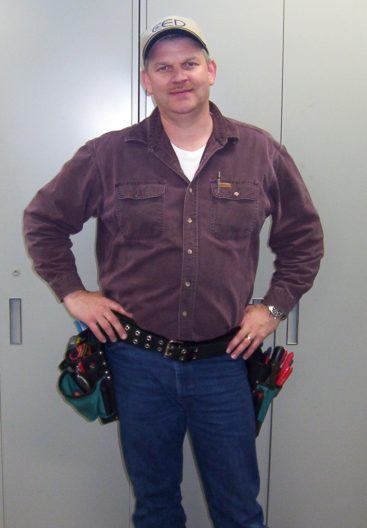 What is your role at SEFS?
What is your role at SEFS?
I’ve worked for the Olympic Natural Resources Center as the Maintenance Mechanic II for the past 28 years. I was hired three weeks before the ribbon cutting ceremony in July of 1995. Taking on a new facility was challenging but at the same time, exciting! There is a personal sort of ownership that I feel toward this facility. So, when asked what I do for work, this is what I say. I take care of all maintenance related work including electrical, plumbing, HVAC, security and fire systems, and a very complex water system out here. We are on 40 acres, mostly forested with an extensive trail system. I also help facilitate field projects for various researchers. I’ve also had the privilege of working with the SEFS It team as well as Campus IT folks over the years in troubleshooting issues out here at this remote site.
Tell us about your road to SEFS
The first question I usually get is “The University of Washington has a facility in Forks?” The second question either by people I meet here, or longtime friends is, “how did you end up working for the University of Washington?” The short answer is my wife is responsible for me getting this job, and she reminds me of that fact all the time, and then we laugh, but it’s true! She was hired on toward the end of construction to do a final cleaning of the buildings here and she let me know that the University was soon going to be looking for a Maintenance Mechanic for the facility. I had no idea this place was even being built right here in my own hometown! So, I applied for the Maintenance Mechanic II position and the rest is history. It was the first time in my life that I left a job to go to another one, I had mixed feelings about that, but looking back after 28 years it was one of the best decisions, I would end up making.
The longer answer is I grew up in a time period where the trades were still taught in school, things like carpentry, welding and auto shop class. As Mike Rowe says all the time, and I couldn’t agree more, when these types of classes were dropped from the school curriculum, less and less young people ended up in these types of jobs. By the time I was 14, I could wire an entire house, thanks to my stepdad letting me shadow him. I was welding and using all kinds of shop tools all before I even had my driver’s license. Everything I came across I would take apart to see how it was made. I was and am still curious about how things work.
Over the years before coming to the UW, I had several jobs in maintenance, local mills, the hospital here in town that all led me to being offered and accepting this job. The local staff here as well as folks at the U have been an absolute pleasure to work for.
Where did you grow up?
That is also interesting. I grew up right here in Forks Washington and graduated in 1982. Fast forward to 1995, when I was hired at the U, and here I am still, although 4 years ago my wife and I moved a bit farther away to the area of Agnew Wa. Working for the University in my hometown of Forks is the best of both worlds. It has that small town atmosphere without all the traffic and other challenges that can sometimes come with living in a big city. For 25 years I had a less than two-mile commute, some mornings I might even see another car on the road. That alone was worth a lot!
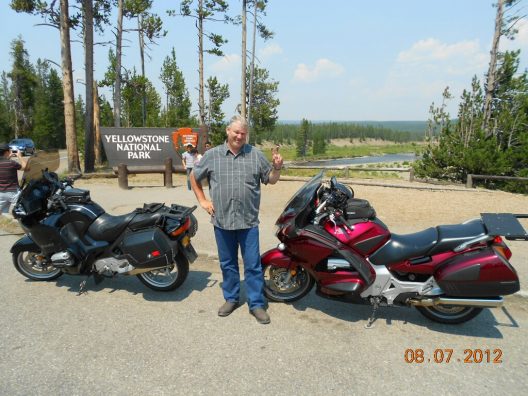 What are your favorite ways to spend time outside of work?
What are your favorite ways to spend time outside of work?
I grew up riding motorcycles and have had several over the years. Getting out exploring either on long road trips on my big bike to places like the Grand Canyon, Yellowstone, Yosemite and Glacier National Parks or just spending time in my own areas on the forest roads riding my dual sport motorcycle in an area where I grew up is one of my all-time favorite things to do. Of course, nothing beats time spent with family and friends sitting around the fire pit whether at home or camping, telling stories.
What inspires you?
This question is harder to nail down, mainly because there are so many things that move me. It’s also a question that can be different for each one of us. For me, it’s the simple things like watching a child play with a puppy, to the grace of seeing someone reach out to a total stranger in a simple act of kindness. When I see a couple in their 80’s holding hands, I want to know their story, and sometimes if the opportunity presents itself, I’ll strike up a conversation. It’s those conversations that inspire me every day.
